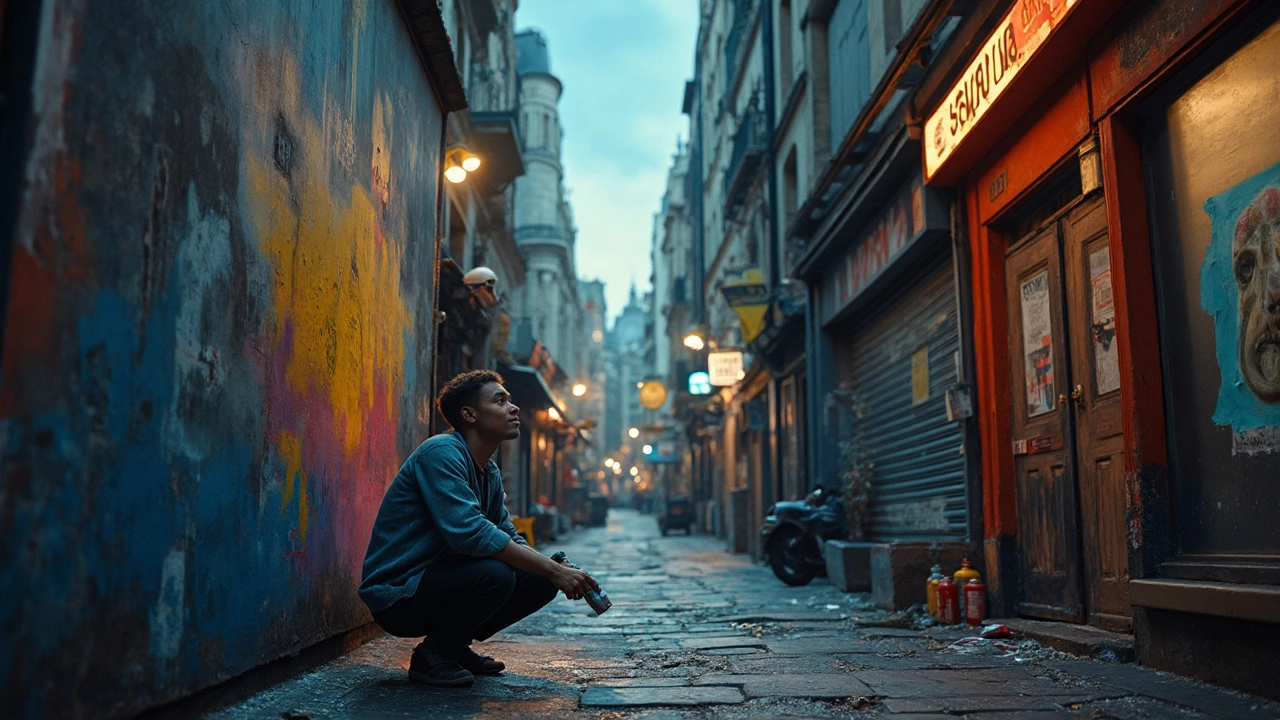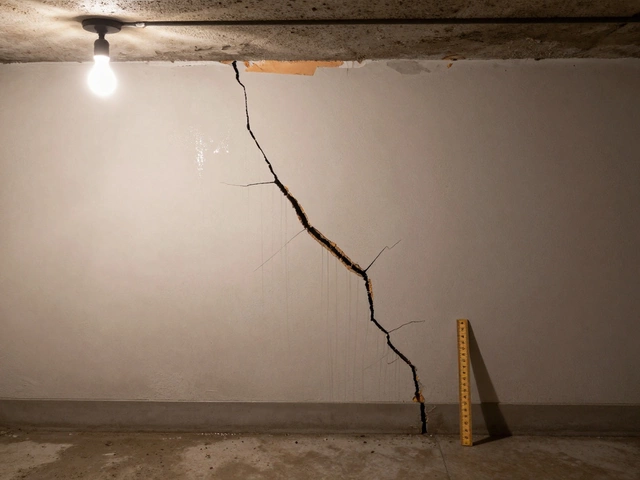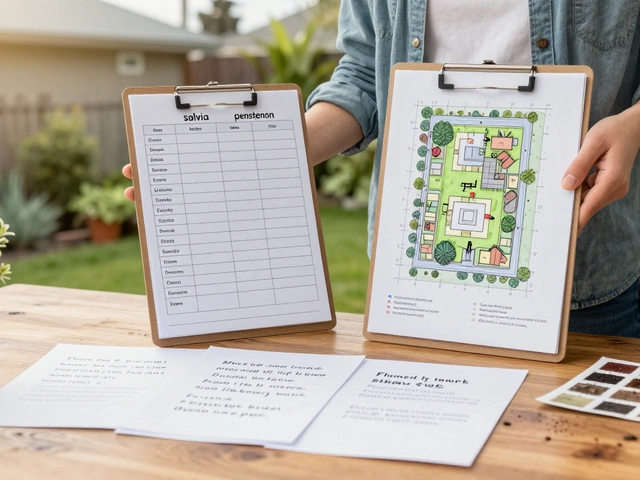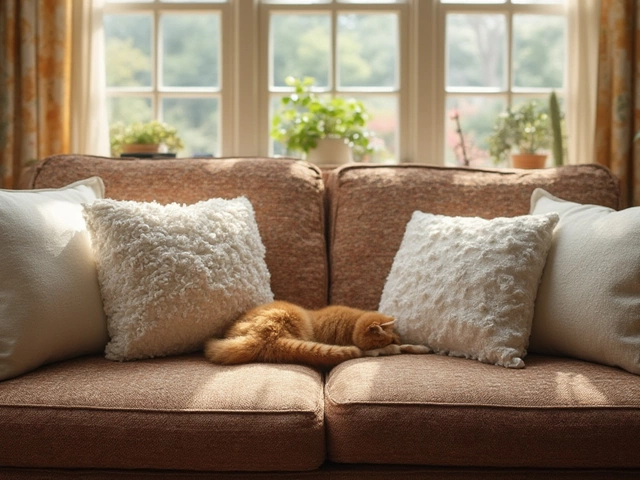Ever seen a wild mural on a city wall and wondered if the artist just broke the law? You’re not alone. Graffiti on public walls is everywhere, but whether you can legally spray-paint your own masterpiece depends on where and how you do it.
Here’s the deal: In most places, if you paint someone else’s property without permission, that’s illegal—no matter how epic your design is. It’s classed as vandalism, which can land you in real trouble, from fines to even jail time. But it’s not all black and white. Some cities have areas where artists can legally go wild with their spray cans, and building owners sometimes give the green light for murals.
- Why Wall Graffiti Is a Gray Area
- What the Law Actually Says
- When Graffiti Is Actually Legal
- Risks and Penalties If You Get Caught
- Tips for Safe and Legal Street Art
- Where to Find Legal Wall Spaces
Why Wall Graffiti Is a Gray Area
Here’s what’s tricky about wall graffiti: The same act can be a crime in one spot and a celebrated art form in another. Cities like Bristol in the UK are famous for street art from artists like Banksy, even though some of it started out illegal. At the same time, many places crack down hard on any mark made without permission.
The main problem is that laws see graffiti as vandalism if you don’t have the thumbs up from a property owner. But the public doesn’t always agree. Some people see street art as improving ugly buildings or dingy alleys. Others just see a mess. Even law enforcement can be inconsistent. In some parts of New York, for example, the police might ignore small tags but go after larger, more visible pieces.
Let’s look at how complicated this can be:
- If you paint on your own house, you’re good—unless you break neighborhood HOA rules or historic building laws.
- Tag a random wall without asking, and you’re probably caught breaking the law.
- In some cities, like Melbourne, there are spots where legal graffiti is encouraged. You can’t just paint anywhere, though—you need to use the approved areas.
- Some building owners commission massive murals, which are totally legal and sometimes even city-funded.
The numbers show a split too. A 2023 city survey in Los Angeles found that 43% of people thought street art made their neighborhood more interesting, but 35% wanted more laws against illegal graffiti. So, it depends on who you ask and where you do it.
This gray area is why people get confused. What’s art to one person—or city—can be a crime in the next. The best move? Always check the local rules before picking up a spray can.
What the Law Actually Says
So, is wall graffiti always breaking the law? Not exactly. The rules depend on where you are, but most places treat unauthorized graffiti as vandalism or criminal damage. In the United States, for example, doing graffiti without permission—on private or public walls—can get you hit with charges under state or local laws. A lot of cities have zero tolerance, and getting caught with a spray can near a wall at odd hours makes cops super suspicious.
To break it down, if you paint on someone else’s property without asking first, that’s usually illegal. A shop owner, your school, even government buildings—if they didn’t say yes, it’s a crime. Some US states bump up the penalties if it’s on schools or public monuments. And if you’re caught with spray paint and no clear reason, that alone can sometimes get you a fine or community service.
Check this out—here’s how different places handle graffiti laws:
- New York City: Graffiti is a misdemeanor. They’ll charge you for even carrying spray paint in the subway.
- Los Angeles: If you damage more than $400 worth of property, that’s a felony.
- London: Graffiti without consent is criminal damage. You could get up to 10 years if the damage is serious.
But there are exceptions. If you get the owner’s written permission, it’s not against the law. This is why you see legal murals or giant ads painted on walls—they followed the rules.
| City | Penalty for Illegal Wall Graffiti |
|---|---|
| New York | Fine up to $2,500 or up to a year in jail |
| Los Angeles | Fine, community service, or jail depending on damage |
| London | Up to 10 years in prison (serious cases) |
It's always smart to check what's up with local rules before you take out those spray cans. Rules change city by city, and what flies in one place could be a huge legal headache somewhere else.
When Graffiti Is Actually Legal
You might think all wall graffiti is trouble, but that’s not true everywhere. The big secret? Graffiti is legal if you have permission. That means if the property owner—be it a shop, a café, or even the local council—says it’s cool, you’re in the clear. In most major cities, you’ll spot vibrant murals and street art on walls with the owner’s blessing. Sometimes, they even pay artists to do it! That’s how you end up with those huge, colorful pieces in business districts or on community centers.
There’s also something called “free walls” or “graffiti walls.” These are spots set aside by cities specifically for street art. For example, Melbourne in Australia has official graffiti laneways, and London’s Leake Street Tunnel is famous for its rotating art. In the U.S., the Wynwood Walls in Miami is a giant outdoor gallery where artists can legally do their thing. Some cities use these zones to keep graffiti off other buildings and give artists a positive outlet.
- Private property: Get written permission from the owner and you’re good to go.
- Designated walls: Many cities have official legal walls—check your local council’s website for locations.
- Community events: Some neighborhoods run mural projects or festivals, so artists can legally paint.
Let’s talk numbers for a sec. LA’s 2013 mural ordinance led to over 1,800 legal murals being registered citywide in just five years. And in Berlin, more than 60 legal wall spots make the city a magnet for graffiti and street art fans.
If you want to go legit, always double-check the rules. Don’t just trust word of mouth—look for official signs, ask the city, or contact the space owner. If you’re caught painting in a place that’s not truly authorized, a misunderstanding won’t get you off the hook.
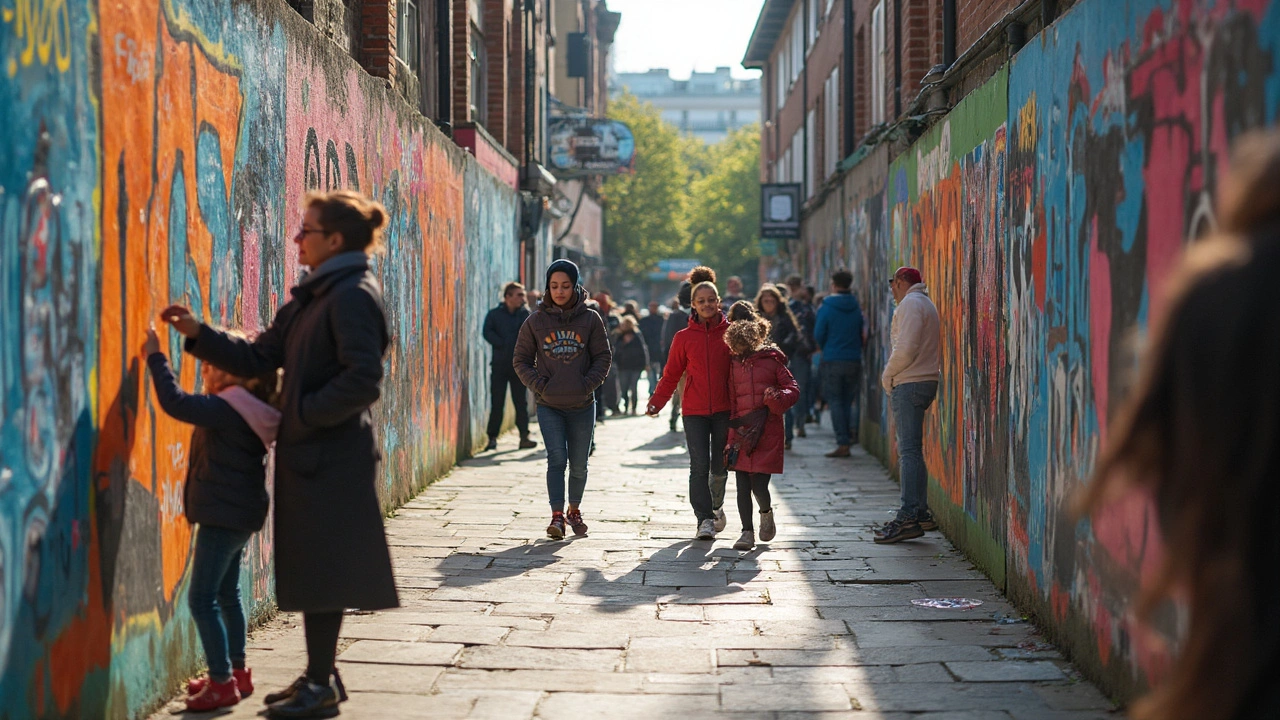
Risks and Penalties If You Get Caught
If you get busted for wall graffiti, things can get stressful fast. Getting caught painting walls without permission is usually called vandalism or criminal mischief. The law doesn’t care if your art is cool or not—it’s the lack of permission that counts. In most cities, penalties depend on the size of the damage and whether it’s your first time. A tiny tag could mean a ticket, but if you cover a whole building, you could face much bigger consequences.
Here’s the breakdown for what could happen:
- Fines: Most first-time offenders get hit with fines. Depending on where you live, these can range from $100 up to $5,000.
- Community Service: A lot of places make you clean up graffiti or do other community work. This could be anywhere from 10 hours up to over 100.
- Jail Time: Sounds harsh, but some states treat larger graffiti jobs or repeat offenses as a misdemeanor or even a felony. In places like California or New York, you could spend up to a year in jail for repeated or major tags.
- Restitution: Courts often order you to pay for repairs, which adds up fast—especially if the wall is part of a landmark or private business.
- Permanent Record: A vandalism charge can stick around and pop up in background checks. That hurts if you’re job hunting or applying for colleges.
For folks under 18, parents might get stuck with the bill or community service hours. Also, some cities suspend your driver’s license for a while even if you weren’t anywhere near a car.
Here’s a quick look at some real numbers:
| Location | First Offense Fine | Possible Jail Time |
|---|---|---|
| Los Angeles | $1,000 - $10,000 | Up to 1 year |
| New York City | $250 - $5,000 | Up to 1 year |
| Miami | $500 - $5,000 | Up to 60 days |
Bottom line: Even for a quick tag, the risk is real. If you’re set on doing street art, find out about legal walls or get permission from property owners before you touch the spray can. It’s the simplest way to share your art without getting stung with a penalty.
Tips for Safe and Legal Street Art
If you want to get into wall graffiti or create your own street art without stress, you’ve got to know how to do it the right way. Here are some smart, practical tips so you can avoid fines—or worse.
- Always get permission first. Before you grab a spray can, talk to the building owner or check if the wall is part of a legal art zone. A signed OK is your best protection if anyone questions your piece.
- Look for legal graffiti walls. Lots of cities have spaces set aside just for street artists. London, Berlin, and Melbourne have famous legal walls, but even smaller towns are starting to catch on. Do a quick search or check city websites.
- Work with local organizations. Community groups and youth centers sometimes host mural projects or art jams. These events are not only legal, but they often provide supplies and get your name out there.
- Stay away from public transport or government buildings. Painting on buses, trains, or anything owned by the city usually gets you in serious trouble. These places almost always press charges.
- Respect private property. If it’s someone’s house, business, or even an abandoned building, get permission in writing. No exceptions. Otherwise, your graffiti is still considered vandalism.
- Research your local laws. Rules around graffiti and street art aren’t the same everywhere. For example, New York City tags graffiti as a misdemeanor, but in Los Angeles, you can get hit with a felony if the damage tops $400.
If you’re curious how risky it really is, here’s a quick look at typical fines for illegal wall graffiti in a few major cities:
| City | First Offense Fine |
|---|---|
| New York | $250–$1,000 |
| San Francisco | $100–$1,000 |
| London | Up to £5,000 |
One more tip: take photos of your permission and your piece. That way, if a neighbor or cop stops you, you can prove you’re there legally.
Where to Find Legal Wall Spaces
If you want to do wall graffiti without breaking the law, you’ve got options. Plenty of cities around the world now offer legal walls where street artists can show their skills without looking over their shoulders. These spots aren’t hidden—you just need to know where to look and what rules to follow.
Many local governments and art organizations have mapped out places where wall art is not just allowed—it’s encouraged. For example, Melbourne in Australia has Hosier Lane, known around the globe for its rotating graffiti. Berlin’s Mauerpark lets artists paint on long stretches of concrete wall, and in London, Leake Street Tunnel (officially called the "Banksy Tunnel") is set aside for legal spray painting. In New York City, you can find the Welling Court Mural Project in Queens—a hotspot for street artists working with property owners’ permission. Smaller towns have started jumping on the bandwagon too, so don’t just think big cities.
- Street art festivals: These often include temporary or permanent legal walls. Look up events like Upfest (Bristol), or POW! WOW! festivals worldwide.
- Community projects: Check out local Facebook groups, art collectives, or city council websites; they’ll often post about open calls for public murals and legal graffiti events.
- Dedicated legal spots: Stick to spaces that are officially listed as free walls. Websites like legal-walls.net let you search by country and city to find exact locations and rules for each wall.
Keep this in mind: just because a wall looks like it’s covered in tags, that doesn’t mean it’s legal. Always double check with the site owner or local authorities before you get started. Some walls are owned by private businesses that welcome artists if you just ask first.
If you’re serious about street art, it’s worth reaching out to local artists. They usually know the best spots and can tip you off about upcoming projects. You can also DM organizers or council members—most are happy to help legitimize your work if you’re clear about what you want to paint.
| City | Famous Legal Graffiti Spot |
|---|---|
| Melbourne | Hosier Lane |
| Berlin | Mauerpark Wall |
| London | Leake Street Tunnel |
| New York City | Welling Court Mural Project |
| Bristol | Upfest Walls |
Want to stay out of trouble and still get your stuff out there? Stick to legal wall graffiti sites. You’ll meet other artists, swap tips, and maybe even get spotted for bigger gigs. Plus, you avoid fees, fines, or public service hours scrubbing off your own art. That’s a win all around.
